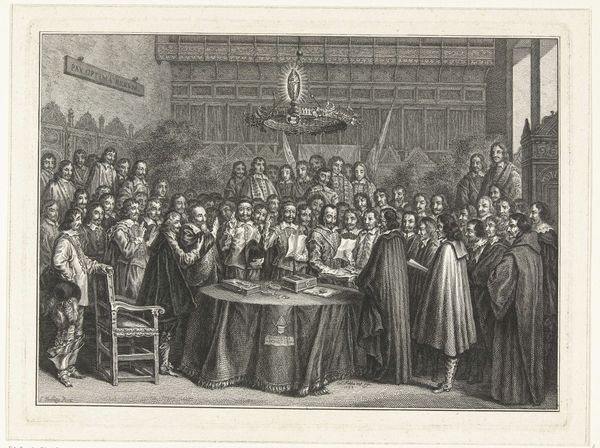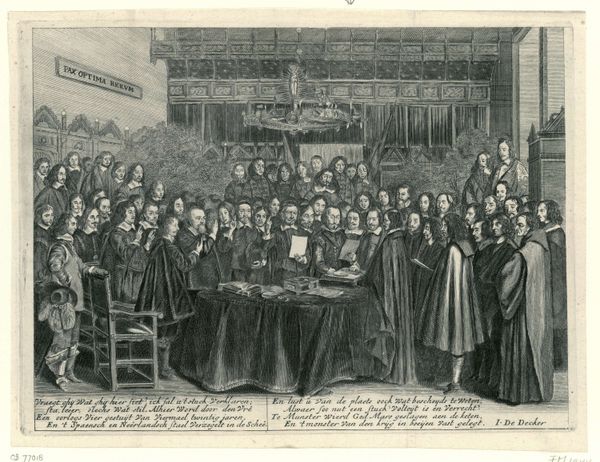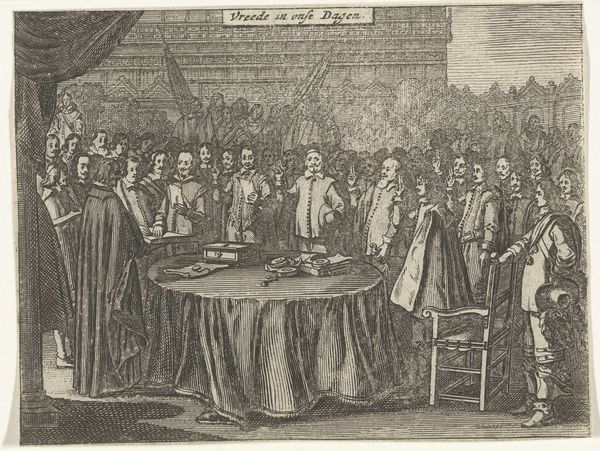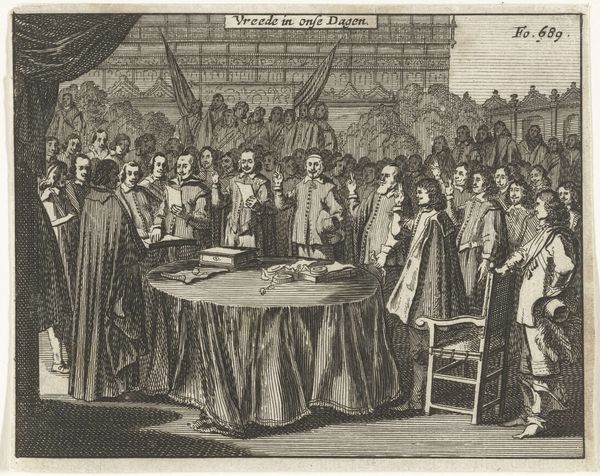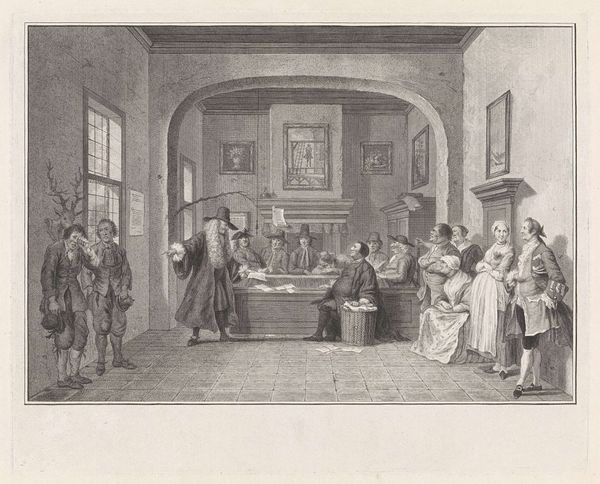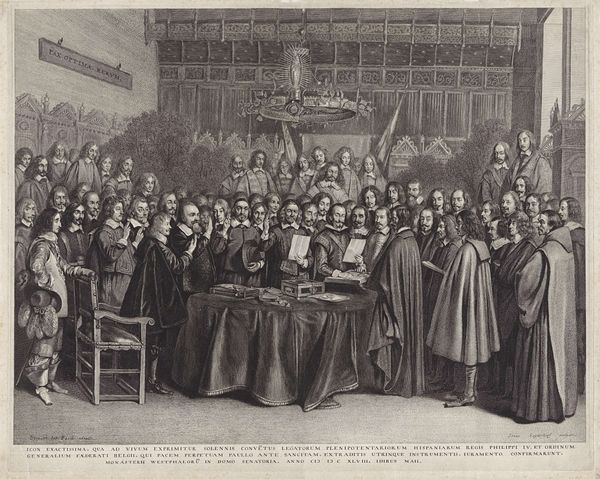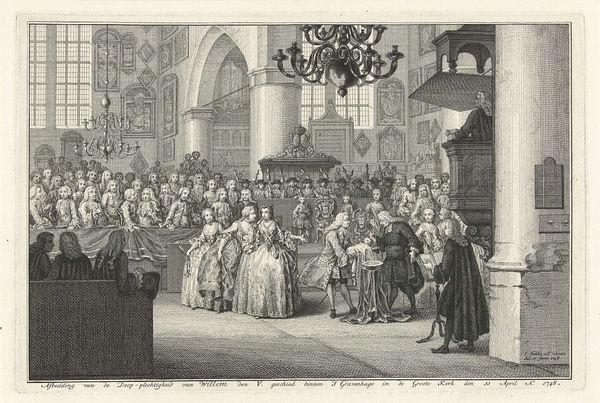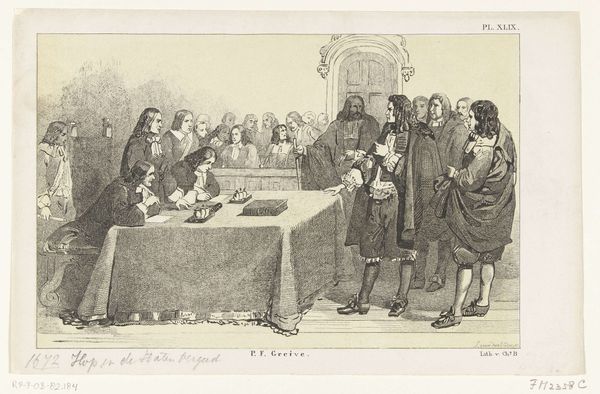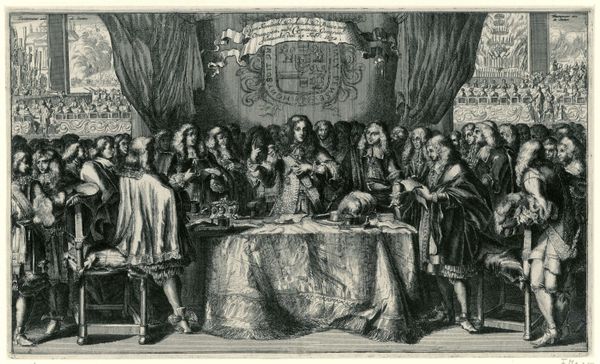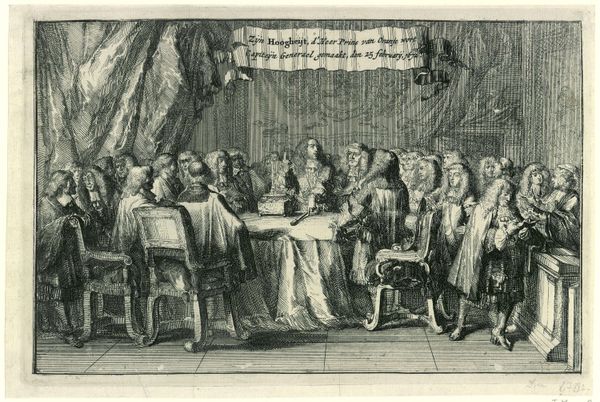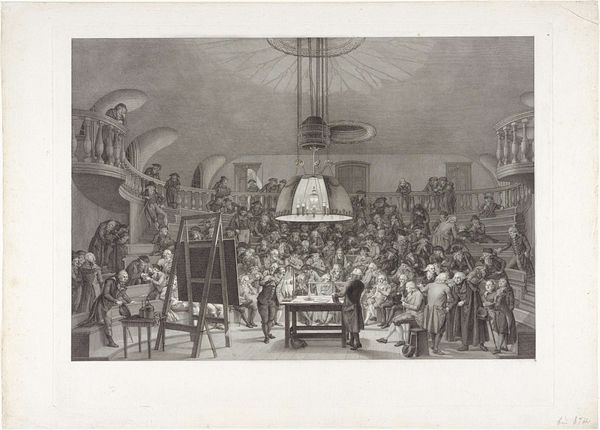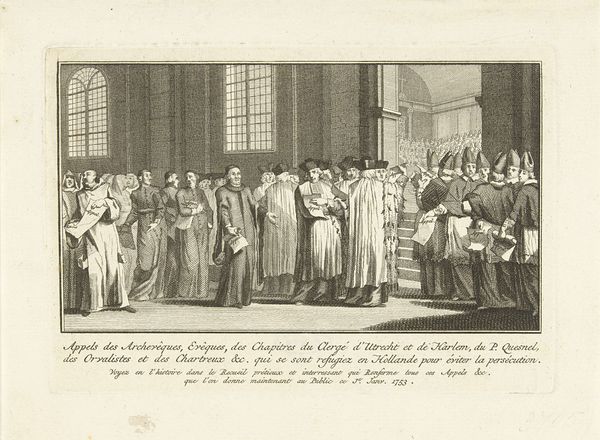
print, engraving
#
baroque
# print
#
old engraving style
#
genre-painting
#
history-painting
#
engraving
Dimensions: height 187 mm, width 254 mm
Copyright: Rijks Museum: Open Domain
Editor: So, here we have Simon Fokke’s "Beëdiging van de Vrede van Munster, 1648," but created in 1754. It’s an engraving, depicting a historical moment. The mood is formal, very stiff. All these men, frozen in this... ceremonial tableau. What strikes you about it? Curator: As a materialist, I immediately consider the engraving process. Think about the labor involved. Each line etched meticulously into a metal plate, then reproduced in multiples. It flattens the historical event, turning it into a commodity for consumption. Consider also the division of labor inherent in printmaking during this era; Fokke likely collaborated with others to produce the engraving, so how much creative input did he actually have? What implications might this collaborative production process have had on the message the engraving conveys? Editor: That’s a great point, I didn't think about how much work goes into each print! Is that why prints were more commonplace then compared to paintings? Curator: Exactly. Prints democratized images, making them accessible to a wider audience. Think of the historical context: 1754, almost a century after the Peace of Munster. Why reproduce this particular event then? Who was the intended consumer, and what message were they meant to receive regarding the historical significance of the moment that the artwork attempts to portray? Editor: So it becomes less about the historical accuracy and more about the message being produced and distributed. Like propaganda? Curator: Not necessarily overt propaganda, but certainly a carefully constructed narrative, packaged for consumption. And we must consider who had access to it, and how this availability further solidified particular social structures and values. This isn't just a historical document; it’s a material object embedded in a complex web of social relations. Editor: This really changes how I see it. It’s less about the ‘art’ and more about the production and consumption of the image. Curator: Precisely. The "art" exists within that system, shaped by and contributing to it. Editor: Thank you for your insights. I definitely have a lot to reflect on after this experience. Curator: My pleasure. Materiality shapes meaning. Never forget that.
Comments
No comments
Be the first to comment and join the conversation on the ultimate creative platform.
